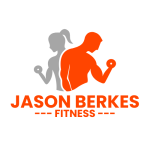Movement is a vital component of a healthy lifestyle, providing numerous physical and mental benefits. However, improper technique can lead to injury, reducing the effectiveness of physical activity. Mastering movement and perfecting technique are crucial for achieving optimal results. In this article, we’ll delve into the importance of proper technique, explore the benefits of mastering movement and provide practical tips for perfecting your technique.
The Importance of Proper Technique
Proper technique is essential for:
- Injury Prevention: Incorrect movement patterns put unnecessary stress on joints and muscles, increasing the risk of acute and chronic injuries.
- Efficient Energy Use: Good technique optimizes energy expenditure, allowing you to perform exercises more effectively.
- Effective Progression: Mastering movement patterns enables progressive overload, leading to continued improvement and growth.
- Enhanced Performance: Proper technique directly translates to better performance in sports and physical activities.
Benefits of Mastering Movement
Mastering movement offers numerous benefits:
- Improved Physical Fitness: Enhanced cardiovascular endurance, increased strength, flexibility and coordination.
- Increased Confidence: Proficiency in movement boosts self-assurance and overall well-being.
- Better Mind-Body Connection: Developed body awareness fosters greater control and understanding of physical capabilities.
- Long-Term Sustainability: Proper technique promotes longevity, reducing the risk of burnout and injury.
Principles of Mastering Movement
To perfect your technique, consider the following principles:
- Start with Basics: Establish a solid foundation in fundamental movement patterns.
- Focus on Form: Prioritize proper technique over quantity or intensity.
- Break it Down: Divide complex movements into manageable components.
- Practice Consistency: Regular practice reinforces proper technique.
- Seek Feedback: Work with coaches, trainers or experienced practitioners for guidance.
Techniques for Mastering Movement
1. Body Awareness
- Mindfulness: Focus on internal sensations and movement patterns.
- Proprioception: Develop awareness of body position and alignment.
- Breathing Techniques: Integrate conscious breathing into exercises.
2. Movement Pattern Progression
- Squats: Master basic squats before progressing to variations.
- Lunges: Focus on balance, alignment and controlled movement.
- Push-Ups: Develop proper shoulder positioning and engagement.
3. Muscle Activation and Control
- Core Engagement: Activate core muscles for stability.
- Shoulder Stabilization: Maintain proper shoulder alignment.
- Pelvic Floor Control: Engage pelvic floor muscles for optimal stability.
4. Flexibility and Mobility
- Static Stretching: Incorporate regular static stretches.
- Dynamic Stretching: Use movement-based stretches for warm-ups.
- Mobility Exercises: Incorporate exercises targeting joints and range of motion.
5. Progressive Overload
- Gradual Progression: Incrementally increase intensity or weight.
- Variation in Repetition: Modify rep ranges to challenge muscles.
- Incorporate Plyometrics: Add explosive movements for enhanced power.
Common Mistakes to Avoid
- Letting Ego Get in the Way: Prioritize technique over heavier weights.
- Ignoring Warm-Ups and Cool-Downs: Ensure proper preparation and recovery.
- Overlooking Weak Links: Address imbalances and weaknesses.
Conclusion
Mastering movement and perfecting technique require patience, dedication and persistence. By understanding the importance of proper technique, incorporating principles and techniques, and avoiding common mistakes, you’ll unlock optimal results and a lifelong commitment to effective movement. Embrace the journey, and celebrate small victories along the way. With time and practice, you’ll become a master of movement.

